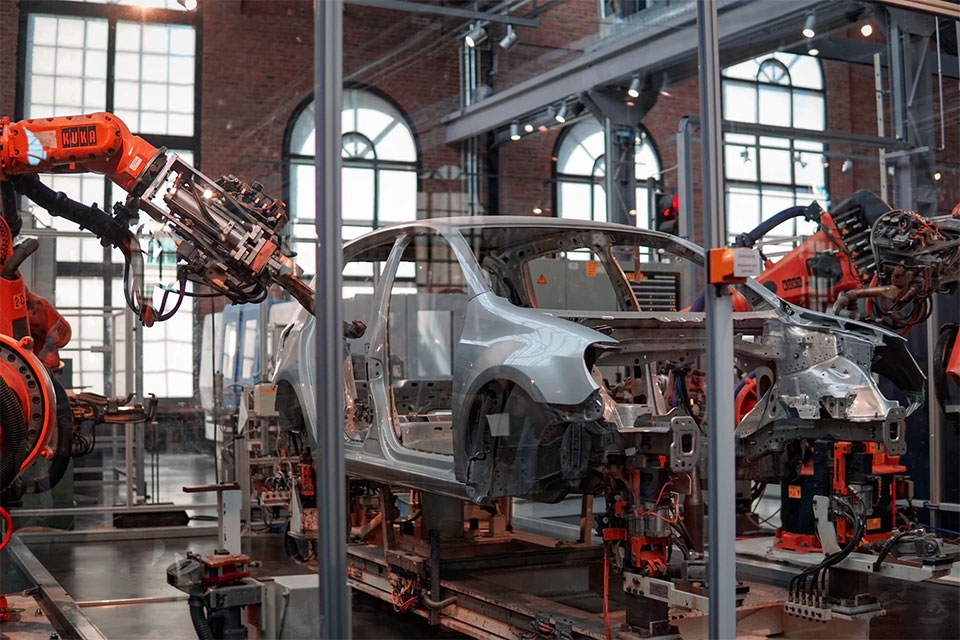Major Robotic Applications in the Automotive Industry

The automotive industry is one that cannot operate without robotic technology. In spite of having used robotic applications since the 60s, many changes have occurred in the industry. The transition has been necessary as production lines must be more efficient with regard to precision and flexibility.
This has called for a number of advancements on the production floor. Some of these improvements include incorporating robotic systems. Here are a few of the robots applications that make automotive manufacturing that much easier.
Vision
Automotive manufacturing sometimes calls for very precise placement of parts. The room for error is almost nonexistent here. A robotic arm with the ability to ‘see’ comes in handy when placing parts that require precision.
The robot arm comes with a laser and camera and laser on its wrist to enable it to see where to place parts on the body of a vehicle. Parts such as windshields, fenders as well as door panels are fixed with precision. This is because of the instant feedback that is given to the robot.
Welding and Handling
Collaborative robots are known to work mainly alongside humans. However, they also collaborate amongst themselves. Different robots are engaged in different workstations. They work collaboratively performing tasks such as welding.
This turns out to be a time-saving cooperation because welding on multiple vehicles can be done in a matter of seconds.
Assembly Operations
The automotive industry uses a wide range of robotic operations in its production lines. However, human employees also contribute to the final product. Robotic arms take up a lot of the operations but the human touch is necessary for many assembly tasks.
Tasks such as wiring and wheel installation are mostly done by human workers. However, they need a little help to reduce weight on the human hand. Therefore, they use a robot hand to diminish the effects of repetitive movements.
The hand’s gripper has simulated nerves, sensor and actuators as well as tendons and muscles. These help decrease fatigue and increase manual ability.
Hard and Dirty Tasks
Needless to say, some of the tasks involved in the manufacture of automobiles can be dirty and difficult. Humans can find them utterly boring which can lead to work being done sloppily. The automotive industry is increasingly relying on collaborative robots to take over some of these tasks.
In addition, many of these tasks are repetitive which can be injurious to humans. Fatigue and boredom can easily lead to reduced motivation and this can bring down quality as well as production.
Since collaborative robots are programmed to work safely with human workers, they have become indispensable in the automotive industry.
Painting
While this may not be a new application, it is nevertheless an important one. It is not easy to come by qualified workers who can perform this task competently. It is, therefore, a lot easier for an automobile manufacturing plant to use robots.
Robots ensure that the painting is uniform all through and on every vehicle they work on. Human workers would hard-pressed to produce the same as they may err or become distracted during the painting process.
Moreover, it is not what one would refer to as a pleasant task. It is hard work, toxic and complex. It also demands consistency and a human worker may not be able to deliver that. You also want to reduce waste. A robot is programmed to use a uniform amount of pain on every part.
There are many more robotic applications that are used in the automotive industry. All the applications applied are geared towards increasing production as well as improving quality. In addition, they are meant to make work easier and more interesting in order to keep motivation up.
Many automotive manufacturing tasks are difficult and could cause injuries at work. This not only causes absence but also leads to extra costs because of compensations. Robots help to reduce injury thus keeping costs low and increasing profits.
Have you read?
Revealed: World’s Best Cities For Raising A Family In 2020.
What You Need To Know For Doing Business In India.
Top 10 Most (And Least) Racially And Ethnically Diverse Large Cities In The United States, 2020.
Benefits Of The Montenegro Citizenship By Investment Program (CIP) For CEOs, CFOs, And Business Leaders.
Six Tips and Tricks to Becoming Your Own Boss.
5 Tips to Successfully Bootstrap a Startup (and Avoid the Drama).
Bring the best of the CEOWORLD magazine's global journalism to audiences in the United States and around the world. - Add CEOWORLD magazine to your Google News feed.
Follow CEOWORLD magazine headlines on: Google News, LinkedIn, Twitter, and Facebook.
Copyright 2025 The CEOWORLD magazine. All rights reserved. This material (and any extract from it) must not be copied, redistributed or placed on any website, without CEOWORLD magazine' prior written consent. For media queries, please contact: info@ceoworld.biz








